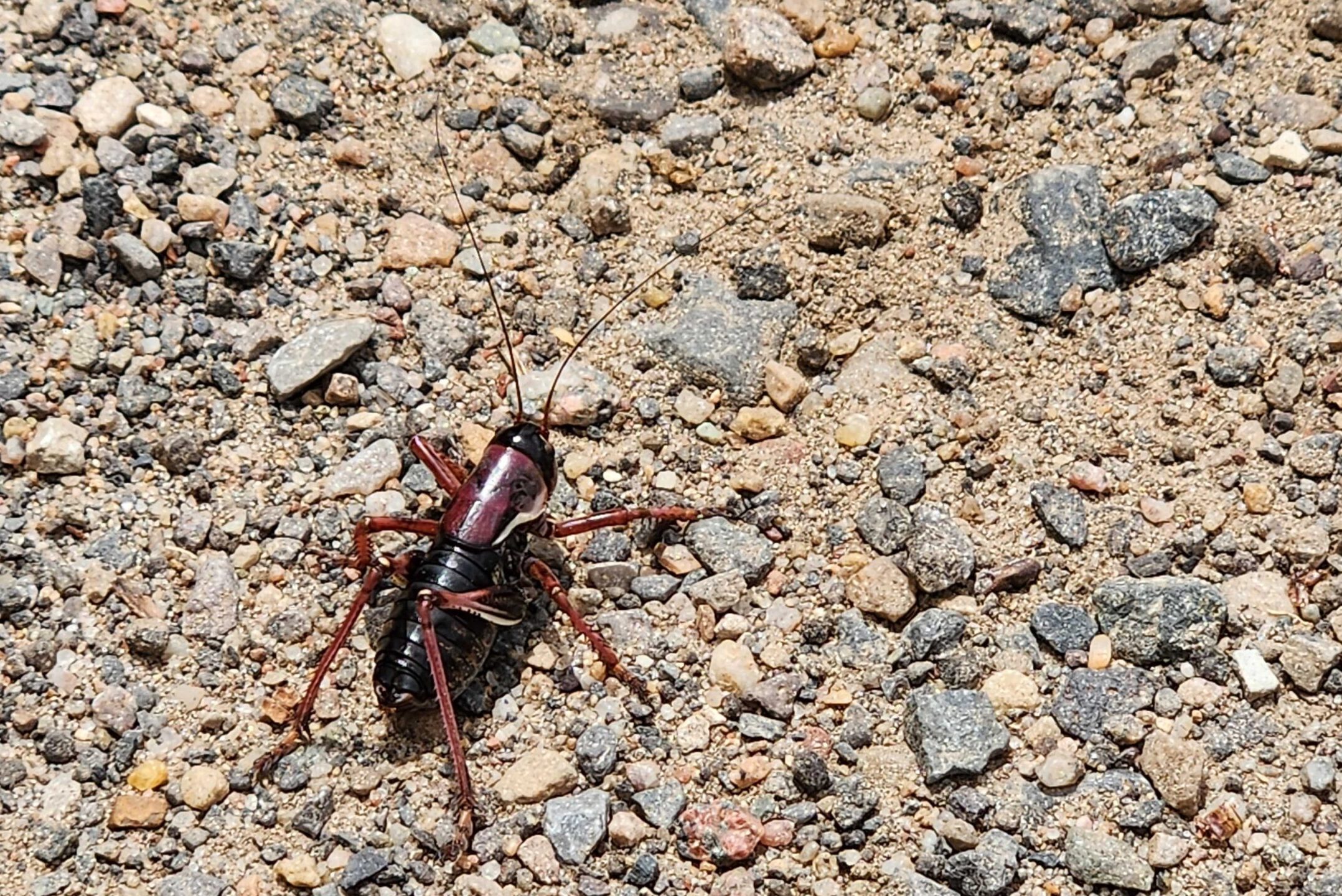
Mormon crickets are washing over Rio Blanco county in waves.
“They go in swarms,” said Linda Masters, executive director for the county’s Colorado State University extension office. “So you'll be driving along and then there's just a swarm of them going across the highway. They're crunching under your tires and the road is actually red from squashed crickets.”
The bugs make for a crunchier, ground-bound analog to the Front Range’s miller moths. Mormon crickets, or Anabrus simplex as they’re officially known, feed on hay, which can damage fields for farmers in the areas around Colorado towns like Rangely. The name “originated during the early years of the Mormon settlement in Utah,” according to Encyclopedia Brittanica. They show up seasonally, but Masters says this year is different since the crickets are usually associated with drier seasons.
“I can't say it's the worst year we've ever had but, certainly in the last few years, they're the worst,” Masters said.
Rio Blanco County Weed and Pest Control is offering free deterrents. Masters said residents can spread the bait, which kills the bugs that eat it, in a line in front of their property. This has a grisly, cascading effect on the insects.
“The crickets are very cannibalistic. So if they eat it, then the ones behind them come along and they will eat the dead ones and then they'll die,” Masters said. “And then the ones behind them will eat the dead ones and then they'll just pile up.
The biggest crop threat is to hay, Masters said. The insects favor green grasses so cutting fields early can force them to move on. Other impacts can be defoliating landscapes, making them more susceptible to soil erosion and mudslides, as well as some wear and tear on houses if the bugs are camped out long enough.
“You can actually have to repaint the side of your house if they're really bad,” Masters said.
The insects travel about 25 miles in a season, meaning they will move on eventually. Though Masters said “it's gonna seem like forever if they're in your yard.”








